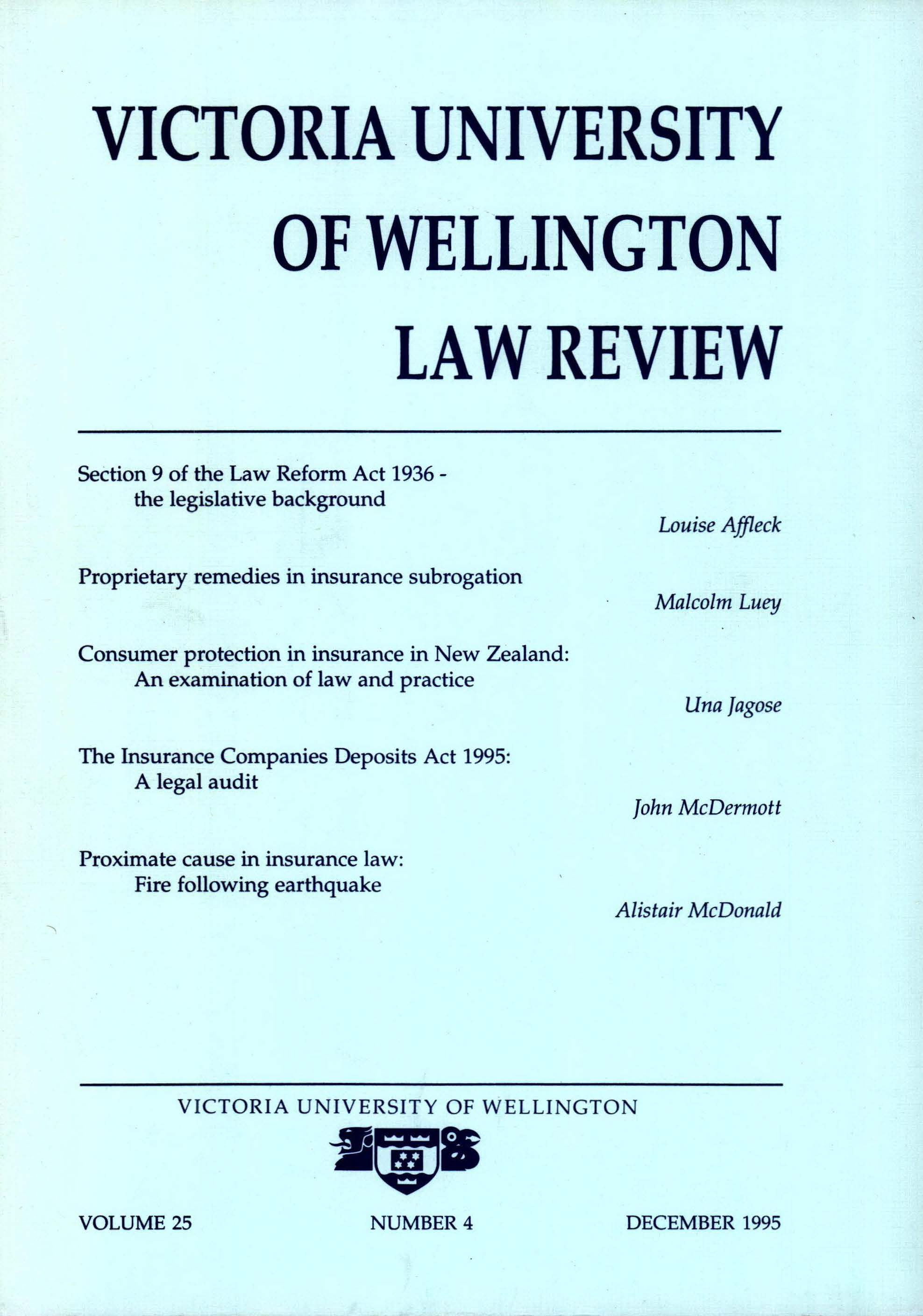Proprietary Remedies in Insurance Subrogation
DOI:
https://doi.org/10.26686/vuwlr.v25i4.6184Abstract
The indemnity insurer's ability to reduce its loss has traditionally been achieved through the doctrine of subrogation. Classic subrogation allows the insurer to rely on the insured's chose in action and seek compensation from a liable third party. The doctrine has also been used to establish the insurer's claim to damages or compensation received by the insured. The following is a discussion of the issues involved in the award of proprietary remedies to satisfy the insurer's claim to subrogated damages. It includes brief introductions to subrogation based on the indemnity relationship, and three different theories on the award of proprietary remedies. It will be shown that the nature of the insurer's right is far from settled, and that the award of the desired proprietary interest may depend on the justice of the particular situation. This may deprive insurers of commercial certainty. It is concluded that insurers seeking certainty of outcome should use statutory or equitable assignments to achieve the desired ownership.
Downloads
Downloads
Published
How to Cite
Issue
Section
License
Authors retain copyright in their work published in the Victoria University of Wellington Law Review.


